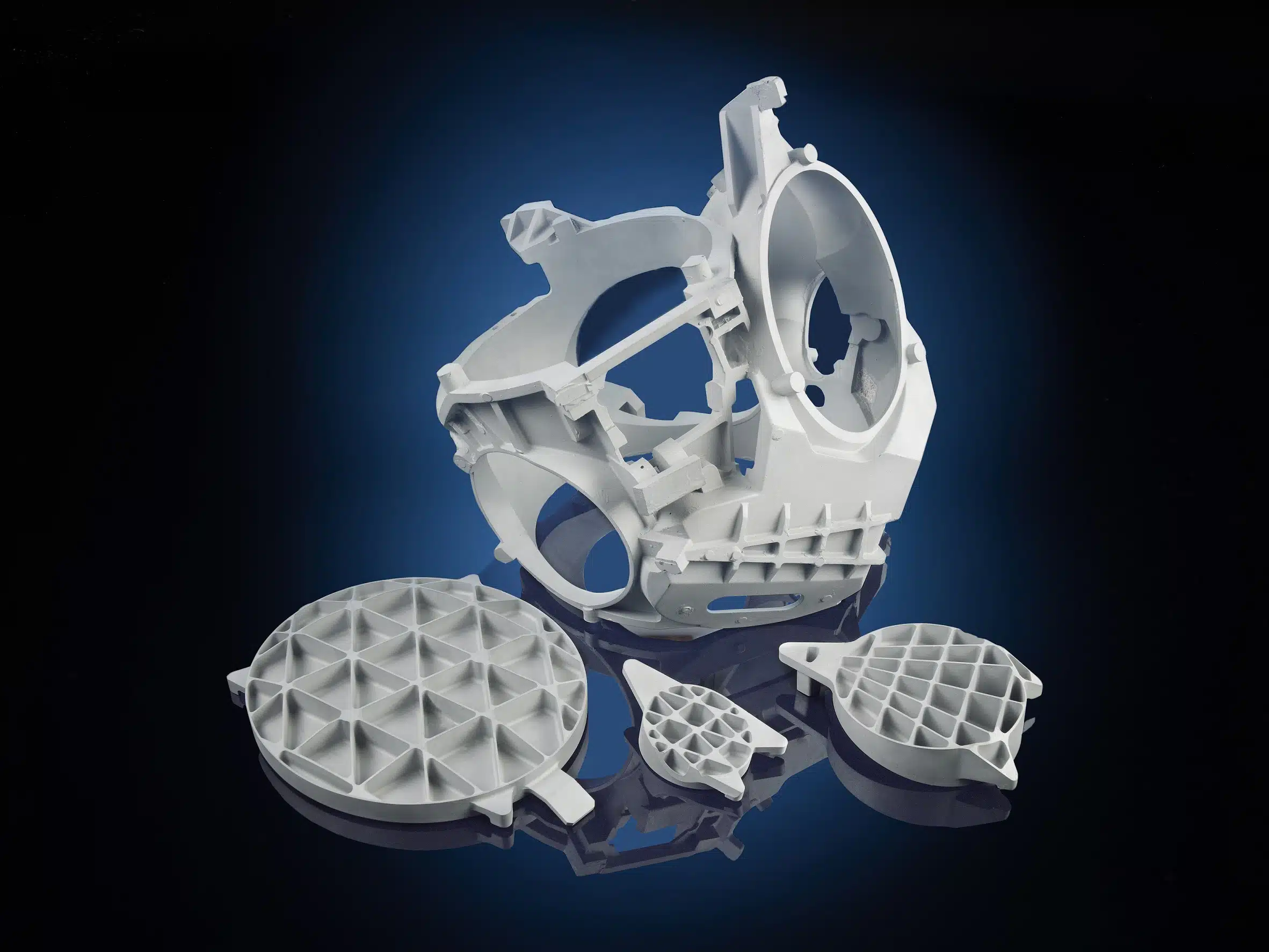
Although increasing development activities have led to system solutions using metal composite materials, the use of especially innovative systems, particularly in the area of light metals, has not been realized. The reason for this is insufficient process stability and reliability, combined with production and processing problems results in inadequate economic efficiency. Application areas are very cost orientated and conservative. Often the industry is not willing to pay additional costs for the use of such materials. For all these reasons metal matrix composites are only at the beginning of the evolution curve of modern materials. As lightweight, stiff, wear resistance, applications become of greater value to the transportation and other industries more high volume uses will evolve; brake rotors, pistons, drive yokes, are examples.
Production melting metallurgy and pouring of MMCs are at present of greater technical importance than those using powder metallurgy composite material. It is more economical and has the advantage of being able to use well proven casting processes such as investment casting. Casting also offers the engineer more degrees of freedom than other processes.
An objective in the development of light metal composite materials may be to increase the modulus of elasticity (Young’s modulus). Using the universally accepted linear and inverse rule of mixtures, this potential increase can be estimated whereby the well-known border cases apply only to certain geometrical alignments of the components in the composite materials. Therefore as the percent of SiCp increase the modulus is linearly moved in the direction of SiCp modulus and away from the aluminum alloy. This reaction is similar in other properties such as thermal conductivity and expansion.
Aluminum alloy / Silicon Carbide MMC castings can be produced in 20%, 30% & 40% concentrations of Silicon Carbide by volume and heat treatable, commonly being furnished to a T77P heat treatment.
This enables engineers to design components to their desired operating environment. For instance the property of wear resistance can easily be understood as the aluminum alloys are relatively soft as compared to the hard carbide particles, therefore enhancing the wear properties with increased portion of very hard silicon carbide particulate (SiCp). Bonding between the SiCp particles and the aluminum matrix is an important consideration and O’Fallon Casting purchases pre-alloyed ingot stock with the percent reinforcement desired and metallurgical bond between the parent metal and particles. The base alloy of currently produced MMC is Aluminum 359 which can be heat treated to tailor it to specific applications. In addition the particle size of the SiCp can be varied for still additional design freedom.
Although the elongation and fracture toughness decrease with the SiCp in the MMC the values are often better than other alternative methods to achieve stiffness and thermal properties. This is because as the higher particle contents are cast the material takes on more ceramic character with lower fatigue life and brittle failure without plastic deformation taking place.
The maximum concentration presently being cast at O’Fallon Casting is 40% SiCp. The fluidity of aluminum alloy MMC alloys decreases as the concentration of SiCp increases therefore the difficulty of successfully casting of higher SiCp concentrations becomes increasingly a challenge. The tendency of aluminum alloy MMC to form shrinkage and gas porosity also becomes a greater concern with higher densities of SiCp and so it is essential to minimize the turbulence within the melt and of mold filling. Hipping of higher percent SiCp MMC’s is sometimes necessary to eliminate subsurface gas voids.
The reinforcement of metals can have many different objectives and opens up the possibility for application of these materials in areas where weight reduction has first priority. The precondition here is the improvement of the component properties. The objectives for light metal composite materials are:
• Increase in yield strength and tensile strength at room temperature and above while maintaining the minimum ductility or component toughness,
• Increase in creep resistance at higher temperatures compared to that of conventional alloys,
• Increase in fatigue strength, especially at higher temperatures,
• Improvement of thermal shock resistance,
• Improvement of corrosion resistance,
• Increase in Young’s modulus,
• Reduction of thermal elongation and engineering thermal conductivity.
